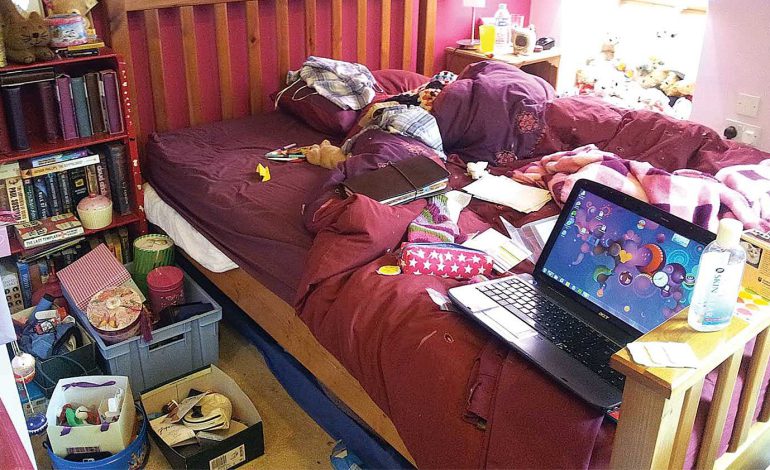IS YOUR HOME making you sick?

Many diseases are environmentally induced through pollutants that lurk in the air, manufactured products and appliances. This year resolve to keep you and your family healthy by ensuring your home is free from the following seven health hazards.
Killer kitchen: Studies show an old, dirty, damp dishcloth could harbour more potentially harmful micro-organisms than the inside of your toilet! The kitchen towels you use to wipe dishes could also harbour dangerous levels of bacteria such as Staphylococcus aureus, which can cause food poisoning.
Safety tip: To kill harmful bacteria, wash dishcloths with hot water (at temperatures higher than 60 degrees Celsius – lower won’t be hot enough to kill harmful germs) and detergent after each use or immerse in boiling water for two minutes then wring out and air dry. Use separate cloths for cleaning floors and food preparation surfaces. When cleaning the kitchen, pay attention to door handles, light switches, kettles, inside the 2fridge and the seals around appliances.
Toxic air: Using air fresheners regularly doubles your risk of developing breast cancer compared to never using them, according to a US study. Solid slow-release air fresheners involve the greatest increase in breast cancer risk. Studies have shown that chemicals contained in some of these products may be carcinogenic, although no direct links have been proven. Many air fresheners also contain phthalates – hormone-disrupting chemicals potentially dangerous to children.
Safety tip: Get more fresh air and prevent the build-up of moisture by opening windows daily and cleaning carpets and rugs regularly. Limit the use of air fresheners in your home. A bowl of baking soda is a good deodoriser and you could also buy an air purifier. Instead of air fresheners, spritz the air with a pump spray containing a few drops of essential oil in water.
Indoor pollution Indoor air is commonly two to five times more polluted than outdoor air. Headaches, irritated eyes, nose and throat, dizziness and fatigue are milder symptoms experienced in polluted homes. If you use gas, paraffin or charcoal for cooking, your home will contain higher levels of the potentially dangerous combustion byproducts carbon monoxide and nitrogen dioxide than those with electric appliances. Nitrogen dioxide exposure increases the risk of infectious respiratory disorders. Adding to the mix of indoor pollution are volatile organic compounds (VOCs) – neurotoxins shown to damage the central nervous system – slowly given off by vinyl flooring, synthetic furnishing, solvents and new appliances, such as TVs. Microscopic dust mites and mould spores also contribute to poor air quality indoors.
Safety tip: Open windows as much as possible and install ventilation. Indoor plants can help by removing toxic chemicals from the air. Vacuum the floors regularly to reduce levels of breathable particles, dust mites and allergen in dust. Don’t use charcoal jikos to warm rooms and always ensure windows are open if you use it for cooking, as carbon 4monoxide is a silent killer.
Harmful mould Fungus growing on bathroom seals, walls, washing machines, and in damp cupboards isn’t simply unsightly, it is also a health risk. In those with weakened immunity, breathing in mould spores can cause respiratory infections, such as bronchitis and sinusitis; it can also take hold in the lungs causing scarring or even death. Common reactions are coughing, sneezing, asthma, congestion, headaches and allergic reactions.
Safety tip: To avoid using chemical mould removers, dry out the area. To prevent the spread of mould spores, dampen the area then scrub with detergent. Put equal parts of water and vinegar in a pump spray bottle and spray the area; leave for five minutes then wipe clean. Replace bathroom silicone that is growing black spots and repair leaky pipes and cracked tiles. Use a dehumidifier to reduce moisture in the air. Even the moist soil of potted indoor plants can be breeding ground for moulds. If you notice a white mould on the surface, repot the plant in a clean pot using fresh potting mix, and allow the soil to dry out between watering.
Radiation risks Cordless phones use microwave radiation to transmit audio signals between the base and the handset, which can pose health risks. This radiation, at higher levels than a mobile phone mast, is emitted constantly and it can pass through brick walls. Similar radiation levels have been linked to chronic fatigue and sleep disorders.
Safety tip: Switch to a corded phone or if you can’t do without cordless, buy a low-radiation phone that does not emit radiation when the phone is not being used. Keep a cordless phone as far away as possible from places where you spend a lot of time, such as your bed and sofa.
Cleaning chemicals Many cleaning products contain a potent mix of chemicals, such as chlorine bleach, petrochemicals that irritate eyes, airways and skin, plus suspected carcinogen formaldehyde. Cleaning sprays have been linked to the onset of asthma in adults.
Safety tip: Clean with plant-based cleaning products rather than synthetic. Try using vinegar, bicarbonate of soda, olive oil and lemon juice to make your own cleaners.
Home decorations Conventional paint can contain polyurethanes, petrochemicals and PVC and give off VOCs and solvent fumes for around five years. Research has found that some new carpets contain hormone-disrupting brominated flame retardant BDE-209, and pesticide tributyltin, an immune and reproductive system toxin. Chemical perfluorooctanoic acid (PFOA) found in new stain-resistant furniture and fabrics has been connected to an increased risk of thyroid disease.
Safety tip: To minimise off-gassing from chemically treated materials and woods, such as MDF, refurbish second-hand furniture instead of buying new. Choose carpets and rugs with organic natural fibre, such as wool, jute or cotton and check they haven’t been treated with harsh chemicals, such as flame-retardants. Or go for natural wood flooring. Use natural plant, water, or clay-based paints.
Published in February 2016




